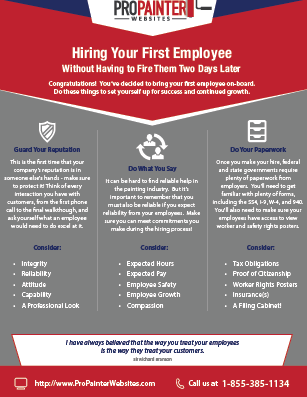Important Seasonal Aspects Of Commercial Outside Painting: What You Must Understand
Important Seasonal Aspects Of Commercial Outside Painting: What You Must Understand
Blog Article
Web Content Created By-McLamb Bagger
When you're planning a business external painting project, seasonal elements can make or break your outcomes. updated blog post 'll intend to take into consideration exactly how temperature level and humidity effect paint application and drying out times. Picking the appropriate period can ensure your paint adheres correctly and lasts much longer. However which seasons are truly the most effective for this kind of job? Let's check out the crucial elements that can affect your project's success.
The Effect of Temperature Level on Paint Application
When you're intending an industrial outside painting job, the temperature can significantly impact just how well the paint sticks and dries.
Ideally, you want to repaint when temperatures vary in between 50 ° F and 85 ° F. If it's as well cool, the paint might not treat appropriately, resulting in problems like peeling off or fracturing.
On the flip side, if it's as well warm, the paint can dry as well quickly, preventing correct attachment and leading to an uneven surface.
You must also take into consideration the time of day; early morning or late afternoon supplies cooler temperature levels, which can be more favorable.
Always inspect the maker's referrals for the specific paint you're making use of, as they typically provide advice on the ideal temperature level array for optimal results.
Humidity and Its Result on Drying Times
Temperature level isn't the only environmental element that influences your industrial external paint project; humidity plays a considerable duty as well. High moisture degrees can decrease drying times considerably, impacting the general high quality of your paint job.
When the air is saturated with dampness, the paint takes longer to treat, which can result in issues like bad bond and a greater risk of mildew growth. If you're repainting on a particularly moist day, be gotten ready for extended wait times in between coats.
It's critical to monitor neighborhood weather and strategy appropriately. Preferably, aim for moisture levels between 40% and 70% for ideal drying out.
Keeping these factors in mind ensures your job stays on track and provides a lasting finish.
Best Seasons for Commercial Outside Paint Projects
What's the very best season for your business outside paint tasks?
Spring and very early autumn are normally your best options. Throughout these periods, temperature levels are moderate, and moisture degrees are often lower, creating optimal conditions for paint application and drying.
Avoid summertime's intense heat, which can trigger paint to dry too rapidly, leading to bad adhesion and surface. Likewise, winter months's cold temperatures can impede proper drying and treating, taking the chance of the longevity of your paint work.
Aim for days with temperature levels in between 50 ° F and 85 ° F for optimum results. housepainters near me in mind to inspect the neighborhood weather report for rain, as damp conditions can ruin your task.
Preparation around these elements ensures your painting project runs smoothly and lasts longer.
Final thought
In conclusion, intending your commercial external paint jobs around seasonal factors to consider can make a substantial difference in the end result. By scheduling job throughout the optimal temperatures and humidity levels, you'll ensure far better attachment and drying out times. Remember to keep an eye on local weather forecasts and select the correct time of year-- springtime and very early fall are your best bets. Taking these steps will certainly aid you attain a sturdy and expert coating that lasts.
